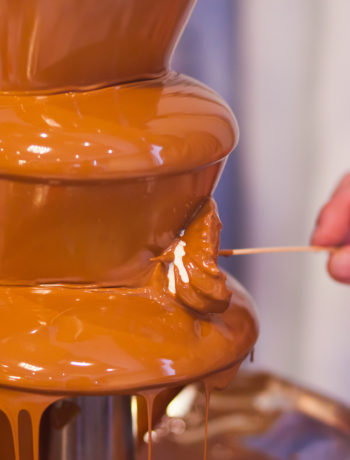Tis the season for pie and we’ve compiled a list of our very best tips for the perfect pie crust. Check them out:
A few helpful tips:
Basics:
- All ingredients used to make pie crust should be cold. Refrigerate all of them (even the flour) before use.
- Pie crust dough temperature should not get warmer than 60 degrees F.
- For tender pie crust, all liquids should be ice cold and added gradually to moisten the dough, not drench it.
- All dry ingredients should be sifted before added to the mixture.
Mixing:
- Use a pastry blender to mix your dough. Only blend until ingredients are mixed. Overworked pie dough makes a tough crust.
- To test the dough to see if it’s ready, gently pinch it and if it sticks together with small dry cracks, it’s ready.
- Use your own hands to handle the pie dough as little as possible.
Rolling:
- Let your pie dough rest in the refrigerator after mixing. This will make it easier to roll out and shape. Let it stand at room temperature for about 30 minutes before rolling after the resting period.
- How heavy is your rolling pin? The heavier the better!
- To prevent less handling, roll out your pie dough in between sheets of parchment paper that have been sprinkled lightly with flour. (To keep the parchment paper from sliding off the table, sprinkle a few drops of water underneath it).
Perfect Crust:
- Once the crust is laid in the pie plate, seal it with a slightly-beaten egg white wash and let it refrigerate for about 15 minutes before adding filling. This prevents a soggy bottom crust.
- Always cut deep slits in the top of fruit pies to prevent sogginess.
- For a nice golden crust, use an egg wash: 1 egg + 1 Tablespoon heavy cream. Mix together and brush with a pastry brush onto the top of uncooked pie crust.
- Fat is best. Lard produces the best pie crusts.
- If you use butter, it should be cut into small pieces and chilled until it is really cold (almost frozen).
- For a flakier crust, substitute ice-cold water for ice-cold heavy cream.
Shaping the Edge:
- Use simple kitchen utensils to shape the edge of the pie crust: fork, spoon, chopsticks, or your fingers!
Storing:
- Pie dough may be frozen for up to 3 months, and refrigerated for up to 2 days.



Brooke
November 21, 2012 at 10:58 amI’ve used pie crust cutters to add detail, but the small cut outs around the edge of the pie for a prettier crust got way too dark/burnt some? Have any suggestions as how to utilize them without this happening?
Cait
November 21, 2012 at 11:56 amYes. Any edges that you think may get burned should be covered with tinfoil. Not the entire pie crust… just the edges. So if you have small cut-outs, try placing small pieces of foil over them when you bake your crust. That should do the trick!